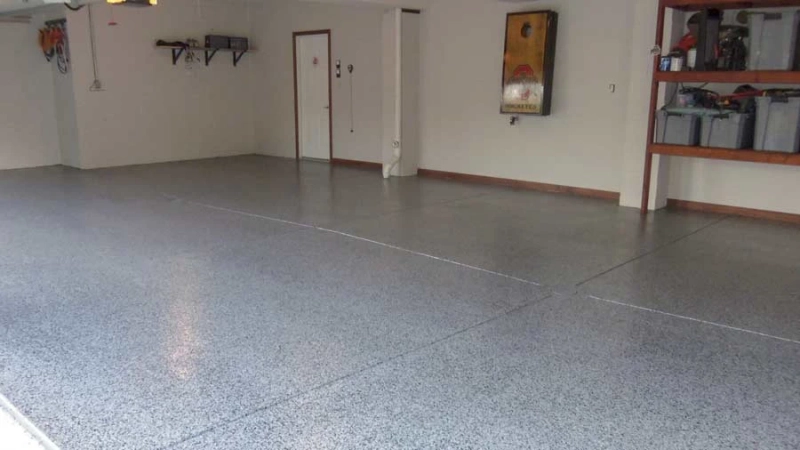A garage is an extra space that is mostly used as a laundry room or a recreational area. So, most people prefer concrete for the garage floor. However, an uncoated concrete floor in the garage might look unattractive and requires much maintenance. So, to make it appealing and low maintenance, you can opt for floor coating. It will also add to the look and feel of the garage.
Epoxy coating for the garage floor is a very famous option because of its easy availability and affordability. It is a simple DIY and can be applied with rollers and brushes. It offers durability, low maintenance, affordable application, and damage resistance. However, another type of coating, i.e., polyaspartic, is coming into the picture these days.
Let us look into the details of polyaspartic for the garage floor.
What is polyaspartic floor coating?
Floor Coatings of Polyaspartic form a protective layer of aliphatic polyurea over concrete floors and metal surfaces to increase their strength. It can be sprayed, painted, or plastered over a surface to prevent damage. It makes the overall look elegant and easy to maintain.
How does polyaspartic coating cure?
For facilities such as hospitals or pharmacies that cannot be shut for floor resurfacing, polyaspartic offers a significant benefit. During application, they have a minimal disturbance routine without odor and can be ready in a day.
Polyaspartic coatings offer the benefit of quick-drying over epoxy coating. While epoxy coating takes two days to cure, polyaspartic cures in less than two hours. It gets ready for foot traffic in two hours and for vehicle traffic in 24 hours.
Floor coating contractors in Nashville explain that polyaspartic offers significant benefits over epoxy by drying quickly and curing in both cold and hot weather. Polyaspartic is resistant to extreme weather conditions and does not get damaged by heat, chilly, or moisture. It has a tolerance of up to 200 degrees Fahrenheit.
Does polyaspartic resist chemical spills?
Yes, it does! Polyaspartic coatings are so strong that they can withstand abrasions, tire scratches, high temperatures, and oil and grease stains. Even after multiple spills, it won’t require hard cleaning or resurfacing.
It has also been noted for many years that polyaspartic is not prone to the strongest acids like hydrochloric acid and sulphuric acids. It can also stand strong against UVA and UVB rays.
Polyaspartic coatings are so strong that they last up to a lifetime.
Does polyaspartic require a professional application process?
Polyaspartic coating is applied with brushes and rollers. It is similar to applying paint on walls. However, a DIY application would not result in a sleek finish. A professional will do the same job to achieve the best results as they are equipped with the necessary tools and have years of experience..
How does polyaspartic look after it cures?
Polyaspartic gives a very fine look to the floors after it cures. That’s why it is preferred by most property owners. It is available in different colors. So, it can match any color of the walls. Flooring and coating contractors can also custom mix the colors to achieve the desired look. Polyaspartic is simply very aesthetic and elegant.
Professionally applied polyaspartic floor coatings have higher quality, finish, and poshness as compared to DIY epoxy coatings.
How affordable is Polyaspartic?
Polyaspartic, however, the hero of the industry, is 20 times costlier than epoxy. However, this one-time investment lasts a lifetime. Polyaspartic can hold color on the floor and will not turn yellow. It doesn’t get marks against tire screeching or oil spills. It can even be coated over epoxy to get an extremely strong result.
Key Takeaways
Polyaspartic floor coatings deliver the ultimate floor finish than any other floor coating. However, it is to be remembered that concrete below the polyaspartic should be prepared well; else, the coating won’t sit nicely. If the concrete is damaged or unleveled, polyaspartic will not give the matte finish. In that case, floor covering like tiles will suit best. So, it is always beneficial to examine the floors thoroughly before choosing to cover or coat the floors.


